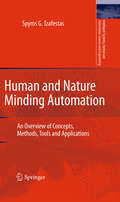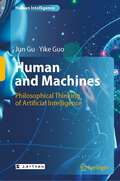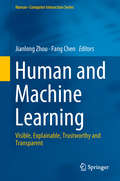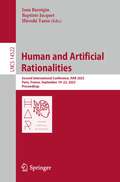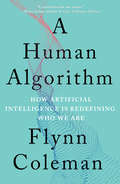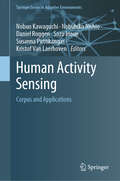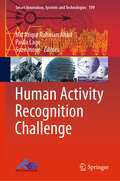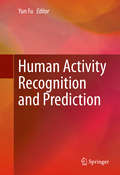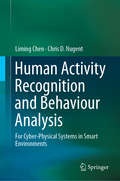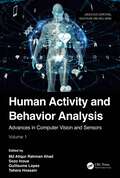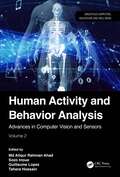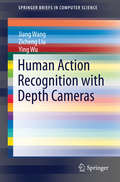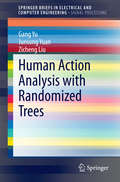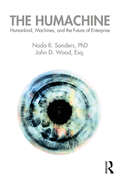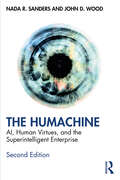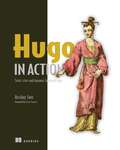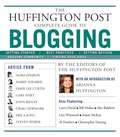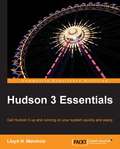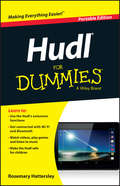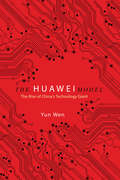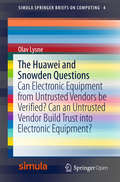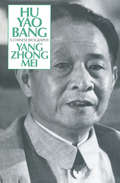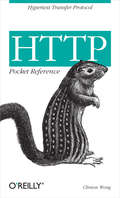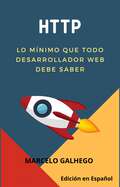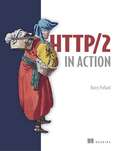- Table View
- List View
Human and Nature Minding Automation
by Spyros G. TzafestasThis book examines the "symbiosis" of automation and technology with the human and the nature towards the ultimate goal of assuring global sustainability. Throughout the years a variety of approaches, technologies and practices have been produced in the direction of achieving human-and nature-minding automation and industrial activity. In this book an attempt is made, for the first time, to present in a cohesive and consolidated way an overview of all these issues together, and show how they combine to provide human-and nature-minding (green) systems. Human-minding automation is possible by employing concepts and techniques from the human factors and ergonomics fields, including job satisfaction, human-friendly interfaces, and human values, whereas nature-minding industrial activity and human development can be achieved by considering as a whole the human, economic, natural and cultural resources in the short and long term. In particular, nature-minding design selects the production methods and technologies that have the minimum impact to the nature. The book is intended for use both as a free reference conceptual book, and as general introductory book in relevant teaching and research environments.
Human and Machines: Philosophical Thinking of Artificial Intelligence (Human Intelligence)
by Jun Gu Yike GuoThis book shares Chinese scholars’ philosophical views on artificial intelligence. The discussions range from the foundations of AI—the Turing test and creation of machine intelligence—to recent applications of AI, including decisions in games, natural languages, pattern recognition, prediction in economic contexts, autonomous behaviors, and collaborative intelligence, with the examples of AlphaGo, Microsoft’s Xiao Bing, medical robots, etc. The book’s closing chapter focuses on Chinese machines and explores questions on the cultural background of artificial intelligence. Given its scope, the book offers a valuable resource for all members of the general public who are interested in the future development of artificial intelligence, especially from the perspective of respected Chinese scholars.
Human and Machine Learning: Visible, Explainable, Trustworthy and Transparent (Human–Computer Interaction Series)
by Jianlong Zhou Fang ChenWith an evolutionary advancement of Machine Learning (ML) algorithms, a rapid increase of data volumes and a significant improvement of computation powers, machine learning becomes hot in different applications. However, because of the nature of “black-box” in ML methods, ML still needs to be interpreted to link human and machine learning for transparency and user acceptance of delivered solutions. This edited book addresses such links from the perspectives of visualisation, explanation, trustworthiness and transparency. The book establishes the link between human and machine learning by exploring transparency in machine learning, visual explanation of ML processes, algorithmic explanation of ML models, human cognitive responses in ML-based decision making, human evaluation of machine learning and domain knowledge in transparent ML applications. This is the first book of its kind to systematically understand the current active research activities and outcomes related to human and machine learning. The book will not only inspire researchers to passionately develop new algorithms incorporating human for human-centred ML algorithms, resulting in the overall advancement of ML, but also help ML practitioners proactively use ML outputs for informative and trustworthy decision making. This book is intended for researchers and practitioners involved with machine learning and its applications. The book will especially benefit researchers in areas like artificial intelligence, decision support systems and human-computer interaction.
Human and Artificial Rationalities: Second International Conference, HAR 2023, Paris, France, September 19–22, 2023, Proceedings (Lecture Notes in Computer Science #14522)
by Jean Baratgin Baptiste Jacquet Hiroshi YamaThis book constitutes the proceedings of the Second International Conference on Human and Artificial Rationalities, HAR 2023, which took place in Paris, France, in September 2023. The 18 full and 5 short papers included in this book were carefully reviewed and selected from 39 submissions. They were organized in topical sections as follows: Human and artificial thinking; human thinking and reasoning; neuropsychology and interaction; artificial agents and interaction; and applied reasoning. This volume also contains 2 invited talks in full-paper length.
A Human Algorithm: How Artificial Intelligence Is Redefining Who We Are
by Flynn ColemanA groundbreaking narrative on the urgency of ethically designed AI and a guidebook to reimagining life in the era of intelligent technology.The Age of Intelligent Machines is upon us, and we are at a reflection point. The proliferation of fast–moving technologies, including forms of artificial intelligence akin to a new species, will cause us to confront profound questions about ourselves. The era of human intellectual superiority is ending, and we need to plan for this monumental shift.A Human Algorithm: How Artificial Intelligence Is Redefining Who We Are examines the immense impact intelligent technology will have on humanity. These machines, while challenging our personal beliefs and our socioeconomic world order, also have the potential to transform our health and well–being, alleviate poverty and suffering, and reveal the mysteries of intelligence and consciousness. International human rights attorney Flynn Coleman deftly argues that it is critical that we instill values, ethics, and morals into our robots, algorithms, and other forms of AI. Equally important, we need to develop and implement laws, policies, and oversight mechanisms to protect us from tech’s insidious threats.To realize AI’s transcendent potential, Coleman advocates for inviting a diverse group of voices to participate in designing our intelligent machines and using our moral imagination to ensure that human rights, empathy, and equity are core principles of emerging technologies. Ultimately, A Human Algorithm is a clarion call for building a more humane future and moving conscientiously into a new frontier of our own design.“[Coleman] argues that the algorithms of machine learning––if they are instilled with human ethics and values––could bring about a new era of enlightenment.” —San Francisco Chronicle
Human Activity Sensing: Corpus and Applications (Springer Series in Adaptive Environments)
by Nobuo Kawaguchi Nobuhiko Nishio Daniel Roggen Sozo Inoue Susanna Pirttikangas Kristof Van LaerhovenActivity recognition has emerged as a challenging and high-impact research field, as over the past years smaller and more powerful sensors have been introduced in wide-spread consumer devices. Validation of techniques and algorithms requires large-scale human activity corpuses and improved methods to recognize activities and the contexts in which they occur. This book deals with the challenges of designing valid and reproducible experiments, running large-scale dataset collection campaigns, designing activity and context recognition methods that are robust and adaptive, and evaluating activity recognition systems in the real world with real users.
Human Activity Recognition Challenge (Smart Innovation, Systems and Technologies #199)
by Md Atiqur Rahman Ahad Paula Lago Sozo InoueThe book introduces some challenging methods and solutions to solve the human activity recognition challenge. This book highlights the challenge that will lead the researchers in academia and industry to move further related to human activity recognition and behavior analysis, concentrating on cooking challenge. Current activity recognition systems focus on recognizing either the complex label (macro-activity) or the small steps (micro-activities) but their combined recognition is critical for analysis like the challenge proposed in this book. It has 10 chapters from 13 institutes and 8 countries (Japan, USA, Switzerland, France, Slovenia, China, Bangladesh, and Columbia).
Human Activity Recognition and Prediction
by Yun FuThis book provides a unique view of human activity recognition, especially fine-grained human activity structure learning, human-interaction recognition, RGB-D data based action recognition, temporal decomposition, and causality learning in unconstrained human activity videos. The techniques discussed give readers tools that provide a significant improvement over existing methodologies of video content understanding by taking advantage of activity recognition. It links multiple popular research fields in computer vision, machine learning, human-centered computing, human-computer interaction, image classification, and pattern recognition. In addition, the book includes several key chapters covering multiple emerging topics in the field. Contributed by top experts and practitioners, the chapters present key topics from different angles and blend both methodology and application, composing a solid overview of the human activity recognition techniques.
Human Activity Recognition and Behaviour Analysis: For Cyber-Physical Systems in Smart Environments
by Liming Chen Chris D. NugentThe book first defines the problems, various concepts and notions related to activity recognition, and introduces the fundamental rationale and state-of-the-art methodologies and approaches. It then describes the use of artificial intelligence techniques and advanced knowledge technologies for the modelling and lifecycle analysis of human activities and behaviours based on real-time sensing observations from sensor networks and the Internet of Things. It also covers inference and decision-support methods and mechanisms, as well as personalization and adaptation techniques, which are required for emerging smart human-machine pervasive systems, such as self-management and assistive technologies in smart healthcare. Each chapter includes theoretical background, technological underpinnings and practical implementation, and step-by-step information on how to address and solve specific problems in topical areas.This monograph can be used as a textbook for postgraduate and PhD students on courses such as computer systems, pervasive computing, data analytics and digital health. It is also a valuable research reference resource for postdoctoral candidates and academics in relevant research and application domains, such as data analytics, smart cities, smart energy, and smart healthcare, to name but a few. Moreover, it offers smart technology and application developers practical insights into the use of activity recognition and behaviour analysis in state-of-the-art cyber-physical systems. Lastly, it provides healthcare solution developers and providers with information about the opportunities and possible innovative solutions for personalized healthcare and stratified medicine.
Human Activity and Behavior Analysis: Advances in Computer Vision and Sensors: Volume 1 (Ubiquitous Computing, Healthcare and Well-being)
by Md Atiqur Rahman AhadHuman Activity and Behavior Analysis relates to the field of vision and sensor-based human action or activity and behavior analysis and recognition. The book includes a series of methodologies, surveys, relevant datasets, challenging applications, ideas, and future prospects.The book discusses topics such as action recognition, action understanding, gait analysis, gesture recognition, behavior analysis, emotion and affective computing, and related areas. This volume focuses on relevant activities in three main subject areas: Healthcare and Emotion, Mental Health, and Nurse Care Records.The editors are experts in these arenas and the contributing authors are drawn from high-impact research groups around the world. This book will be of great interest to academics, students, and professionals working and researching in the field of human activity and behavior analysis.
Human Activity and Behavior Analysis: Advances in Computer Vision and Sensors: Volume 2 (Ubiquitous Computing, Healthcare and Well-being)
by Md Atiqur Rahman Ahad Sozo Inoue Guillaume Lopez Tahera HossainHuman Activity and Behavior Analysis relates to the field of vision and sensor-based human action or activity and behavior analysis and recognition. The book includes a series of methodologies, surveys, relevant datasets, challenging applications, ideas, and future prospects.The book discusses topics such as action recognition, action understanding, gait analysis, gesture recognition, behavior analysis, emotion and affective computing, and related areas. This volume focuses on two main subject areas: Movement and Sensors, and Sports Activity Analysis.The editors are experts in these arenas, and the contributing authors are drawn from high-impact research groups around the world. This book will be of great interest to academics, students, and professionals working and researching in the field of human activity and behavior analysis.
Human Action Recognition with Depth Cameras
by Jiang Wang Zicheng Liu Ying WuAction recognition technology has many real-world applications in human-computer interaction, surveillance, video retrieval, retirement home monitoring, and robotics. The commoditization of depth sensors has also opened up further applications that were not feasible before. This text focuses on feature representation and machine learning algorithms for action recognition from depth sensors. After presenting a comprehensive overview of the state of the art, the authors then provide in-depth descriptions of their recently developed feature representations and machine learning techniques, including lower-level depth and skeleton features, higher-level representations to model the temporal structure and human-object interactions, and feature selection techniques for occlusion handling. This work enables the reader to quickly familiarize themselves with the latest research, and to gain a deeper understanding of recently developed techniques. It will be of great use for both researchers and practitioners.
Human Action Analysis with Randomized Trees
by Gang Yu Junsong Yuan Zicheng LiuThis book will provide a comprehensive overview on human action analysis with randomized trees. It will cover both the supervised random trees and the unsupervised random trees. When there are sufficient amount of labeled data available, supervised random trees provides a fast method for space-time interest point matching. When labeled data is minimal as in the case of example-based action search, unsupervised random trees is used to leverage the unlabelled data. We describe how the randomized trees can be used for action classification, action detection, action search, and action prediction. We will also describe techniques for space-time action localization including branch-and-bound sub-volume search and propagative Hough voting.
The Humachine: Humankind, Machines, and the Future of Enterprise
by Nada R. Sanders John D. WoodThere is a lot of hype, hand-waving, and ink being spilled about artificial intelligence (AI) in business. The amount of coverage of this topic in the trade press and on shareholder calls is evidence of a large change currently underway. It is awesome and terrifying. You might think of AI as a major environmental factor that is creating an evolutionary pressure that will force enterprise to evolve or perish. For those companies that do survive the "silicon wave" sweeping through the global economy, the issue becomes how to keep their humanity amidst the tumult. What started as an inquiry into how executives can adopt AI to harness the best of human and machine capabilities turned into a much more profound rumination on the future of humanity and enterprise. This is a wake-up call for business leaders across all sectors of the economy. Not only should you implement AI regardless of your industry, but once you do, you should fight to stay true to your purpose, your ethical convictions, indeed your humanity, even as our organizations continue to evolve. While not holding any punches about the dangers posed by overpowered AI, this book uniquely surveys where technology is limited, and gives reason for cautious optimism about the true opportunities that lie amidst all the disruptive change currently underway. As such, it is distinctively more optimistic than many of the competing titles on Big Technology. This compelling book weaves together business strategy and philosophy of mind, behavioral psychology and the limits of technology, leadership and law. The authors set out to identify where humans and machines can best complement one another to create an enterprise greater than the sum total of its parts: the Humachine. Combining the global business and forecasting acumen of Professor Nada R. Sanders, PhD, with the legal and philosophical insight of John D. Wood, Esq., the authors combine their strengths to bring us this profound yet accessible book. This is a "must read" for anyone interested in AI and the future of human enterprise.
The Humachine: AI, Human Virtues, and the Superintelligent Enterprise
by Nada R. Sanders John D. WoodUpdated for a post-Covid world, the second edition of this groundbreaking book explains why becoming a Humachine enterprise is the only way forward for a company to maintain a competitive advantage in the age of artificial intelligence (AI).The first edition of The Humachine offered a foundation for a new form of enterprise, integrating AI technology and human resources to optimize the unique advantages possessed by each. Now, in the face of the ‘Great Resignation’ and ‘botsourcing’—where an activity previously done by humans is replaced by technology—thought leaders Sanders and Wood present a more positive and promising scenario, where an enterprise recognizes human resources as an asset class that possesses skills that cannot be replaced by automation. Enlightened business leaders will look to create synergy between technology and people, enabling the organization to maximize its capabilities by elevating the basis of decision making with closer-to-perfect information and rationality. This book provides a roadmap for how to do this and achieve collective intelligence at the enterprise level: superintelligence. More specifically, it answers these questions, and more. Why must an enterprise achieve superintelligence as a competitive advantage in the age of AI? How can any organization achieve superintelligence by following the 4-I model? What is the step-by-step process an enterprise should follow in becoming a Humachine? What strategies can be used by enterprise leaders to ‘futureproof’ the Humachine against uncertainty? All business leaders, executives, and managers at companies wanting to use AI and technology to survive and thrive in this new age, and students of analytics and decision-making, will value this thought-provoking and practical book, rich with case studies.
Hugo in Action
by Atishay JainBuild and deploy a live website in just 30 minutes using Hugo. The Hugo engine lets you rapidly deliver static sites that are low maintenance, high performance, and feature rich. In Hugo in Action you will learn: Building web pages with Hugo and Jamstack Creating content using Markdown Content management with Hugo Designing new Hugo themes Using the Go template language Managing dependencies with Hugo modules Accessing APIs with Jamstack Adding a shopping cart using JavaScript Content tagging with markup Sometimes, simple is better. Static websites—sites with fixed content—are easier to create and maintain, and inherently more secure than dynamic pages. Hugo in Action is a hands-on guide to using the Hugo static site engine to render these websites in milliseconds. Working with a complete example website and source code samples, you&’ll learn how to build and host a site that will wow users and stay stable without a third-party server. Full coverage of the Jamstack (Javascript, APIs, Markdown) shows how easy it is to add complex features to super-simple sites, including eCommerce shopping carts, dynamic forms, and multilingual options. About the technology Because they load pre-built pages, static websites are simple, secure, and incredibly fast. With the Hugo static site generator you can build and render a website in seconds without the grind of hand coding the pages. Hugo takes a directory of content and templates and renders it as a full HTML and CSS website—perfect for blogs, documentation, and other sites that don&’t require real-time updates. About the book In Hugo in Action you&’ll learn step-by-step how to build efficient, low-maintenance static web sites. You&’ll use Hugo as a CMS and web development environment, create custom pages, and design your own Hugo themes. And you won&’t stop there! Moving beyond the basics, you&’ll incorporate the Jamstack model to add capabilities like eCommerce and your own APIs. The result: rich websites that are flexible and incredibly stable. What's inside Building web pages with Hugo and Jamstack Using the Go template language Managing dependencies with Hugo modules Content tagging with markup About the reader For web developers with a basic knowledge of JavaScript. About the author Atishay Jain is a Senior Computer Scientist at Adobe. He has developed web-based software used by millions of Adobe Creative Cloud customers. Table of Contents PART 1 STATIC HUGO WEBSITES: LOADING FAST, BUILDING TO LAST 1 The Jamstack and Hugo 2 Live in 30 minutes: You now have a website 3 Using markup for content 4 Content management with Hugo 5 Custom pages and customized content with the Go template language 6 Structuring web pages 7 Creating your own theme 8 Hugo Modules: Plugins for everybody PART 2 EXPANDING WITH THE JAMSTACK: DYNAMIC OUTSIDE, STATIC INSIDE 9 Accessing APIs to enhance functionality 10 The power of JavaScript 11 Breaking barriers with custom APIs and webhooks 12 Adding e-commerce capabilities using the Jamstack 13 Wrapping it up
The Huffington Post Complete Guide to Blogging
by Arianna Huffington The editors of the Huffington PostThe editors of The Huffington Post -- the most linked-to blog on the web -- offer an A-Z guide to all things blog, with information for everyone from the tech-challenged newbie looking to get a handle on this new way of communicating to the experienced blogger looking to break through the clutter of the Internet. With an introduction by Arianna Huffington, the site's cofounder and editor in chief, this book is everything you want to know about blogging, but didn't know who to ask. As entertaining as it is informative, The Huffington Post Complete Guide to Blogging will show you what to do to get your blog started. You'll find tools to help you build your blog, strategies to create your community, tips on finding your voice, and entertaining anecdotes from HuffPost bloggers that will make you wonder what took you so long to blog in the first place. The Guide also includes choice selections from HuffPost's wide-ranging mix of top-notch bloggers. Among those who have blogged on HuffPost are Barack Obama, Hillary Clinton, Larry David, Jane Smiley, Bill Maher, Nora Ephron, Jon Robin Baitz, Steve Martin, Lawrence O'Donnell, Ari Emanuel, Mia Farrow, Al Franken, Gary Hart, Barbara Ehrenreich, Edward Kennedy, Harry Shearer, Nancy Pelosi, Adam McKay, John Ridley, and Alec Baldwin.
Hudson 3 Essentials
by Lloyd H. MeinholzIf you are a Java developer or administrator who would to like automate some of the mundane work required to build and test software and improve software quality, this is the book for you. If you are a development manager or tester, you can also benefit from learning how Hudson works by gaining some insight into test results and historical trends.
Hudl For Dummies
by Rosemary HattersleyThe essential beginner's guide to the UK's most popular new tabletHudl For Dummies is the indispensible guide to Tesco's highly successful Android tablet. With hands-on instruction tailored to the entry-level user, this book provides expert guidance in clear, concise language to help you get the most out of this great new device. Seasoned technology author Rosie Hattersley walks you through each step, from opening the box to setting up e-mail, accessing Blinkbox, shopping online and more. Even if you're a newcomer to tablet technology, this book will have you up and running in a flash!By utilizing groundbreaking technology, it's no wonder analysts expect the Hudl to become the UK's leading tablet. While the device itself is intuitive, the Hudl's infinite possibilities can be a bit of a mystery to new users. Hudl For Dummies is the definitive guide to the device, helping you access the full capabilities of your new tablet.Gain a complete understanding of how to get up and running with the Tesco HudlDownload and launch apps with your new tablet to make it a workhorse or an entertainment systemDiscover how to access the Internet, e-mail, films, music and booksShop online with your new device and find out how to buy Hudl accessoriesAn entire chapter on troubleshooting allows you to bypass the repair shop for minor issues, and gives you the confidence to adjust settings and preferences without the worry of messing something up. Whether you're transitioning to the Hudl from another tablet, or are new to tablets entirely, Hudl For Dummies will take you from a new user to full-fledged Hudl devotee.
The Huawei Model: The Rise of China's Technology Giant (The Geopolitics of Information)
by Yun WenIn 2019, the United States' trade war with China expanded to blacklist the Chinese tech titan Huawei Technologies Co. Ltd. The resulting attention showed the information and communications technology (ICT) firm entwined with China's political-economic transformation. But the question remained: why does Huawei matter? Yun Wen uses the Huawei story as a microcosm to understand China's evolving digital economy and the global rise of the nation's corporate power. Rejecting the idea of the transnational corporation as a static institution, she explains Huawei's formation and restructuring as a historical process replete with contradictions and complex consequences. She places Huawei within the international political economic framework to capture the dynamics of power structure and social relations underlying corporate China's globalization. As she explores the contradictions of Huawei's development, she also shows the ICT firm's complicated interactions with other political-economic forces. Comprehensive and timely, The Huawei Model offers an essential analysis of China's dynamic development of digital economy and the global technology powerhouse at its core.
The Huawei and Snowden Questions
by Olav LysneThis open access book answers two central questions: firstly, is it at all possible to verify electronic equipment procured from untrusted vendors? Secondly, can I build trust into my products in such a way that I support verification by untrusting customers? In separate chapters the book takes readers through the state of the art in fields of computer science that can shed light on these questions. In a concluding chapter it discusses realistic ways forward. In discussions on cyber security, there is a tacit assumption that the manufacturer of equipment will collaborate with the user of the equipment to stop third-party wrongdoers. The Snowden files and recent deliberations on the use of Chinese equipment in the critical infrastructures of western countries have changed this. The discourse in both cases revolves around what malevolent manufacturers can do to harm their own customers, and the importance of the matter is on par with questions of national security.This book is of great interest to ICT and security professionals who need a clear understanding of the two questions posed in the subtitle, and to decision-makers in industry, national bodies and nation states.
Hu Yao-Bang: A Chinese Biography
by Zhongmei YangCompares IT parks within the Asian Pacific in search of strategies that policy makers can adopt to: reduce the global digital divide; advance distributional equity; and soften some of the negative effects of economic globalization. "Best practices" are suggested based on these cases.
HTTP Pocket Reference
by Clinton WongThe HyperText Transfer Protocol, or HTTP, is the backbone of the World Wide Web. HTTP is the language that each web browser (or other web client) uses to communicate with servers around the world. All web programmers, administrators, and application developers need to be familiar with HTTP in order to work effectively. The HTTP Pocket Reference not only provides a solid conceptual foundation of HTTP, it also serves as a quick reference to each of the headers and status codes that comprise an HTTP transaction. The book starts with a tutorial of HTTP, but then explains the client request and server responses in more detail, and gives a thorough technical explanation of more advanced features of HTTP (such as persistent connections and caching). Most people use the Web every day without knowing anything about HTTP, but for those who need to get "beyond the browser," this book is the place to start.
HTTP - Lo mínimo que todo desarrollador web debe saber
by Marcelo GalhegoTodo este recorrido tiene un comienzo y creo que, si usted está buscando ser un desarrollador web pero no sabe cómo ni por dónde comenzar, este libro puede ser su primer paso en este fantástico viaje. Espero que este libro le ayude a alcanzar sus objetivos y a transformar sus sueños en realidad.
HTTP/2 in Action
by Barry PollardSummaryHTTP/2 in Action is a complete guide to HTTP/2, one of the core protocols of the web. Because HTTP/2 has been designed to be easy to transition to, including keeping it backwards compatible, adoption is rapid and expected to increase over the next few years. Concentrating on practical matters, this interesting book presents key HTTP/2 concepts such as frames, streams, and multiplexing and explores how they affect the performance and behavior of your websites.Purchase of the print book includes a free eBook in PDF, Kindle, and ePub formats from Manning Publications.About the TechnologyHTTP—Hypertext Transfer Protocol—is the standard for exchanging messages between websites and browsers. And after 20 years, it's gotten a much-needed upgrade. With support for streams, server push, header compression, and prioritization, HTTP/2 delivers vast improvements in speed, security, and efficiency.About the BookHTTP/2 in Action teaches you everything you need to know to use HTTP/2 effectively. You'll learn how to optimize web performance with new features like frames, multiplexing, and push. You'll also explore real-world examples on advanced topics like flow control and dependencies. With ready-to-implement tips and best practices, this practical guide is sure to get you—and your websites—up to speed!What's InsideHTTP/2 for web developersUpgrading and troubleshootingReal-world examples and case studiesQUIC and HTTP/3About the ReaderWritten for web developers and site administrators.About the AuthorsBarry Pollard is a professional developer with two decades of experience developing, supporting, and tuning software and infrastructure.Table of ContentsPART 1 MOVING TO HTTP/2Web technologies and HTTPThe road to HTTP/2 Upgrading to HTTP/2PART 2 USING HTTP/2HTTP/2 protocol basicsImplementing HTTP/2 pushOptimizing for HTTP/2PART 3 ADVANCED HTTP/2Advanced HTTP/2 conceptsHPACK header compressionPART 4 THE FUTURE OF HTTPTCP, QUIC, and HTTP/3Where HTTP goes from here
